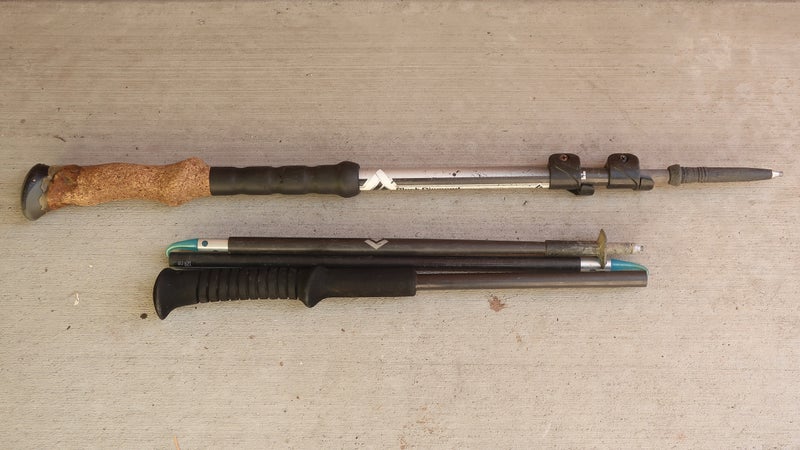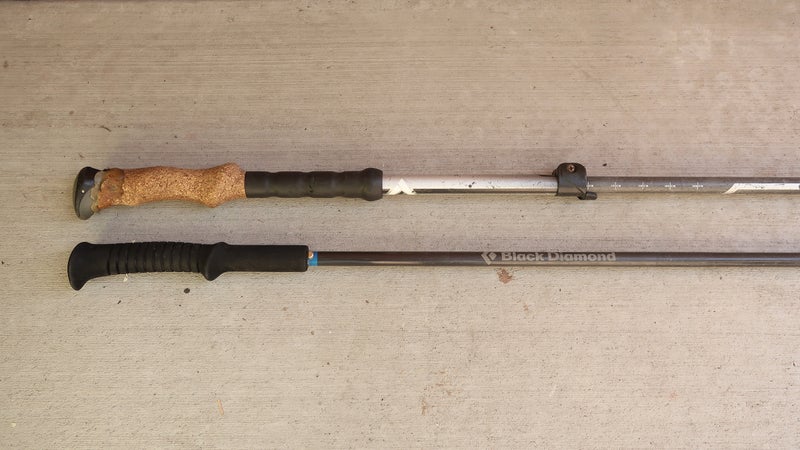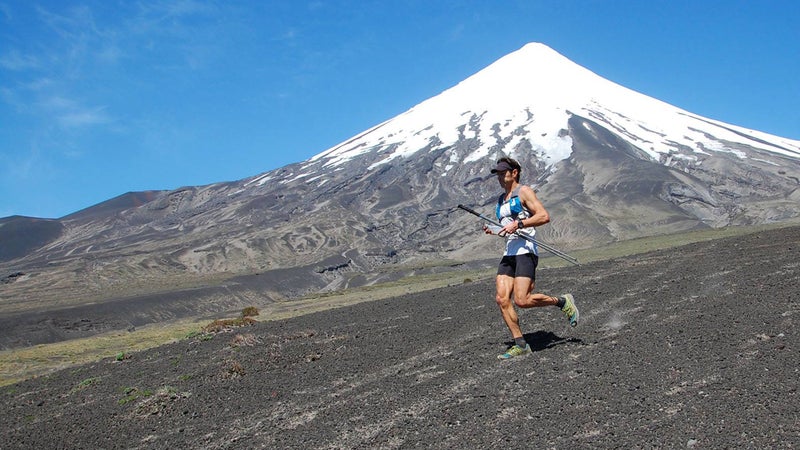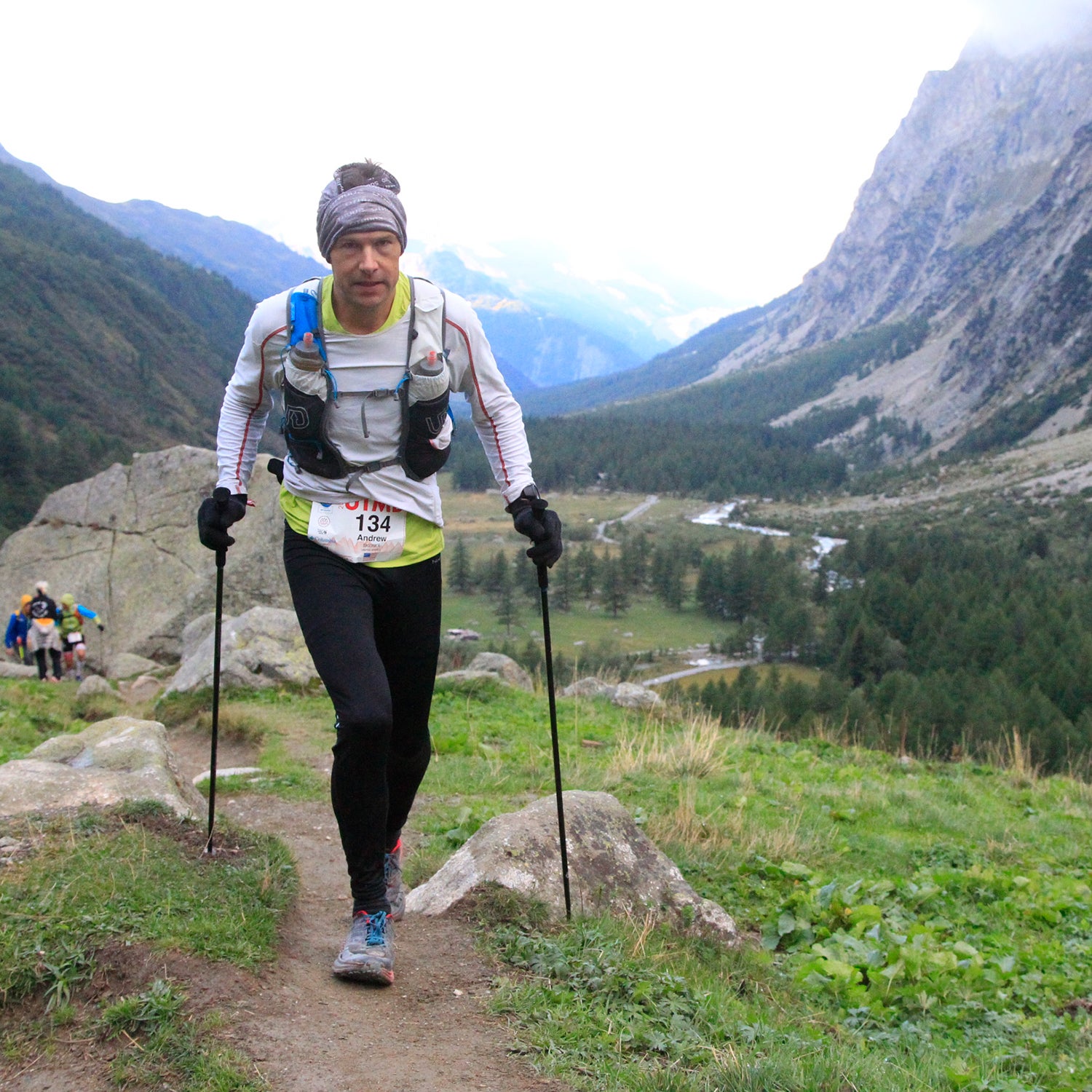Poles have long been considered essential equipment by most backpackers, but runners have been slower to adopt them. But I sense this is changing, based on the┬аnumber of pole-carrying runners I now see at the starting lines of ultra- and mountain-trail marathons. The realization seems to be, тАЬIf Kilian, Fran├зois, and Walmsley all use poles in hard races, maybe I should, too.тАЭ
The value of poles in an ultra depends on:
-
Individual fitness
-
Course length
-
Amount of vertical climbing
Essentially, the more hiking you expect to do, the more valuable theyтАЩll be. (At most running speeds they have minimal or no benefit, and mostly just get in the way and alter proper running form.) Middle-of-the-pack and back-of-the-pack participants will hike more than the front-runners, but some courses like HardrockтАФa 100-miler with over 30,000 vertical feet of climbing at elevations up to 14,048 feetтАФbring even the worldтАЩs fittest ultrarunners to a crawl. Whether to bring poles is a personal decision for every competitor: Is the benefit worth some added weight and fuss?
IтАЩve used poles in two races: , a 100K┬аwith 13,000 vertical feet of gain and 30 miles of sand-like volcanic ash,┬аand , the famous 100-miler in Europe that last year had 32,000 vertical feet of gain.
Benefits of poles for ultrarunners
Poles enable the arms to help the legs with forward and upward propulsion, and with braking on descents. Net energy burn may actually be greater with poles, but the legs incur less stress, helping to preserve strength for later in the race. Poles also provide stability on slick surfaces like mud or wet rocks, and additional points of contact when fording or rock-hopping across streams.
Recommended poles for ultrarunners
Traditional telescoping poles like the Black Diamond Alpine Carbon Cork () or Cascade Mountain Tech Quick Lock Poles () do not work well for ultrarunning. They are too unwieldy, too slow to extend or collapse, and unnecessarily sturdy and heavy.
Much more appropriate for ultrarunning are foldable poles like these:
-
┬а(10 oz; $160)
-
┬а(10 oz; $110)
-
┬а(12 oz;┬а$150)
These models pack down much smaller┬аand are therefore less clumsy to carry. For example, my 47.2-inch poles collapse to just 15.4 inches. In comparison, my go-to backpacking poles collapse to just 25 inches, almost ten┬аinches longer.

Most foldable models are fixed-length┬аand canтАЩt be adjusted. Some offer a microadjustment of six┬аinches, but I donтАЩt find this to be valuable for ultrarunning. First, IтАЩm unlikely to make minor tweaks in a race environment. Second, the feature adds expense and weightтАФabout $20 and three┬аounces per pair, in the case of the Black Diamond Distance Carbon Z versus the Distance Carbon FLZ.
To keep them light, foldable poles have thin shafts that are not as strong or sturdy as most telescoping poles. But for running and hiking on trails without a heavy pack, I think they are sufficient, and I donтАЩt see a reason to buy poles with beefier shafts like the .

Sizing
When holding my pole vertically, I like my elbow to be at a 90-degree angle. If IтАЩm between sizes┬аI size up, so that my elbow is slightly less than 90 degrees. A longer pole allows for a more sustained push, as demonstrated by nordic skiers.
Baskets and straps
If possible, I remove the included mud basketsтАФthey tend to snag in vegetation and rocks, and the extra weight slows down the swing speed. Plus, very seldom have I encountered mud that could swallow an entire pole tip.
Straps are optional. With them, greater pressure can be applied to the pole┬аand the grips need not be held so tightly. However, straps tether the poles to my hands, which I also need for eating, drinking, navigating (depending on the race), andтАФGod forbidтАФcatching myself if I fall. For races with long, sustained climbs, they make more sense to me than on rolling courses with short but constant climbs that will necessitate frequent transitions.
Carrying
Do not wait until race day to determine how best to carry poles when not in use. Bring them on training runs beforehand so that you can practice transitions and experiment with various carrying options. If you do not heed this advice, you will probably find the the poles to be clumsy and you will probably lose time futzing with them.
There are several options for carrying stowed poles, listed below. Your equipment may have a default methodтАФif you donтАЩt like it, buy something different or modify its attachment system.
-
In your hands
-
Attached vertically to shoulder straps, like the
-
In a rear mesh pocket
-
Secured horizontally at the waist, a la the
-
Diagonally across the back, like the
-
A dedicated holster, like the
There is no perfect techniqueтАФeach has downsides, some more than others. Ultimately, your method should:
-
Allow for a quick and clean transition
-
Secure the poles well, with no bouncing and no risk of them falling out
-
Keep your hands free and your poles out of the way
Personally, I think slinging them diagonally over the shoulder is the way to go.



